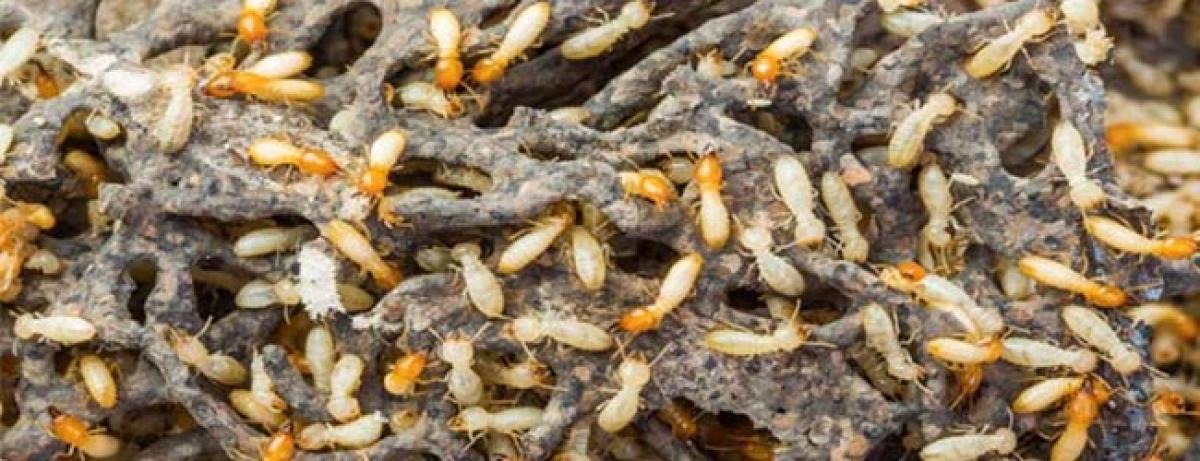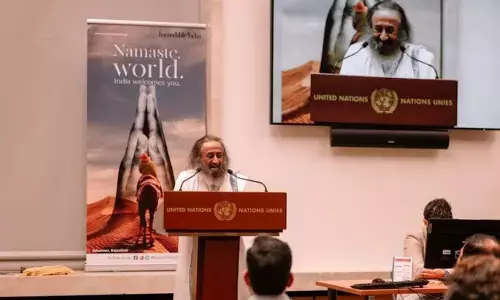Termite mounds built by insects are indicators of nearby ground water: Drought control

You only know that termites, popularly known as white ants, are nasty pests because they munch away your wooden furniture.
Bengaluru: You only know that termites, popularly known as white ants, are nasty pests because they munch away your wooden furniture. But ancient Indians knew these insects can be our saviors in times of drought like the one parts of India are now experiencing. They knew that termite mounds which these insects build are indicators of nearby ground water.
As drought-hit India is striving to quench the people's thirst by dispatching water trains and using satellite images to detect ground water, this simple method, that only requires a survey of termite hills, has escaped the attention of the authorities.
This ancient knowledge contained in the Brihat Samhita of Varahamihira, the sixth century astrologer, astronomer and hydrologist, was first put into practice about three decades ago by E.A.V. Prasad, a geology professor at Tirupati's Sri Ventkateswara University.
Armed with only the ancient manuscript, Prasad was discovering ground water reservoirs with amazing success using trees and termite hills and other bio-indicators listed by Varahamihira as clues.
According to Varahamihira, the presence of termite mounds indicates water below. His other clues for ground water include half a dozen animals, 30 different trees, trees with unusual features like knots in their trunks, two different trees united into one, abnormal palm trees with two crowns instead of one and absence of thorns in a normally thorn bearing tree.
Brihat Samhita, believed to be the essence of ancient Indian wisdom on tropical ground water technology, not only says where to dig for water but also how deep.
Prasad put the ancient technology to test in early 1980s when the Gujarat Water Supply and Sewerage Board (GWSSB) asked him to locate water in Jamnagar, a chronically drought-hit district.
Surveying the surface vegetation, Prasad spotted a date palm entwined with a banyan tree and he asked the GWSSB to drill hole 15 feet north of the tree. Water gushed out at 7,500 litres per hour!
At Haripur village, he identified a termite mound covered with vegetation and had a hole drilled 10 feet north of it. The yield was larger - over 11,000 litres per hour. Within 15 days Prasad located 51 well sites in 30 villages.
In 1981 when his native Andhra Pradesh was reeling under drought, using Varahamihira's clues, Prasad identified 300 sites of wells in Royalaseema, the driest region in the state.
Prasad, who is no more, then described Varahamihira's method "as people's technology to fight drought that cost virtually nothing". Till his death 10 years ago, Prasad led a one-man mission to put this ancient technology on a scientific footing and authored two books.
"Prasad was the pioneer in the application of Varahamihira's concept into practice," said T.S. Badrinarayanan, formerly a geo-scientist with the Tamil Nadu Water Supply Department and now a consultant hydrologist. In 1992 he tried to use this approach to locate ground water reservoirs in Tamil Nadu with success.
"Using termite mounds as hydrologic indicators we drilled 24 bore wells in some parts of Coimbatore district," Badrinarayanan told this correspondent on the telephone.
"Of these, 21 wells discharged 130 to 500 litres per minute, which is a good success rate for a hard rock terrain," he said. The other three also yielded water but less.
What is the scientific basis of the ancient concept that a termite mound is a clue to the presence of groundwater nearby?
According to Badrinarayanan, high humidity is essential for the very survival of termites and the termite mounds function primarily to maintain a constant humidity. The termites accomplish this by building their homes in places where ground water is available nearby and transport the water through a vertical shaft below the mound reaching down to the water table. So, the presence of termite hill is a giveaway that it is sitting over or near a groundwater reservoir.
"It is obvious that the termite mound method can be a good tool for ground water exploration," Badrinarayanan said, adding that "systematic investigations must be carried out near the mounds."
Despite the promise of this simple technique, no government agency is pursuing this approach for ground water detection, he rued.
Jagadiswara Rao, a retired geologist from the S.V.University in Tirupati, said that the Vedic University at Tirupati has proposed a feasibility study for developing groundwater in rural areas using Varahamihira's concept with financial support of Tirumala Tirupati Devasthanam (TTD).
"Although the Committee (which includes me) strongly recommended for the sanction of the project, the TTD has not so far released funds for the project," he said in an email.
By K.S. Jayaraman
(The author can be reached at [email protected])

















